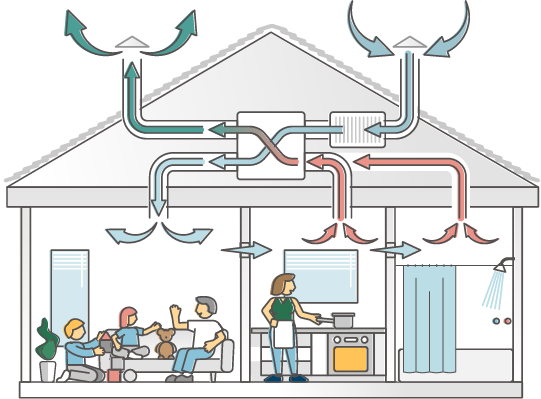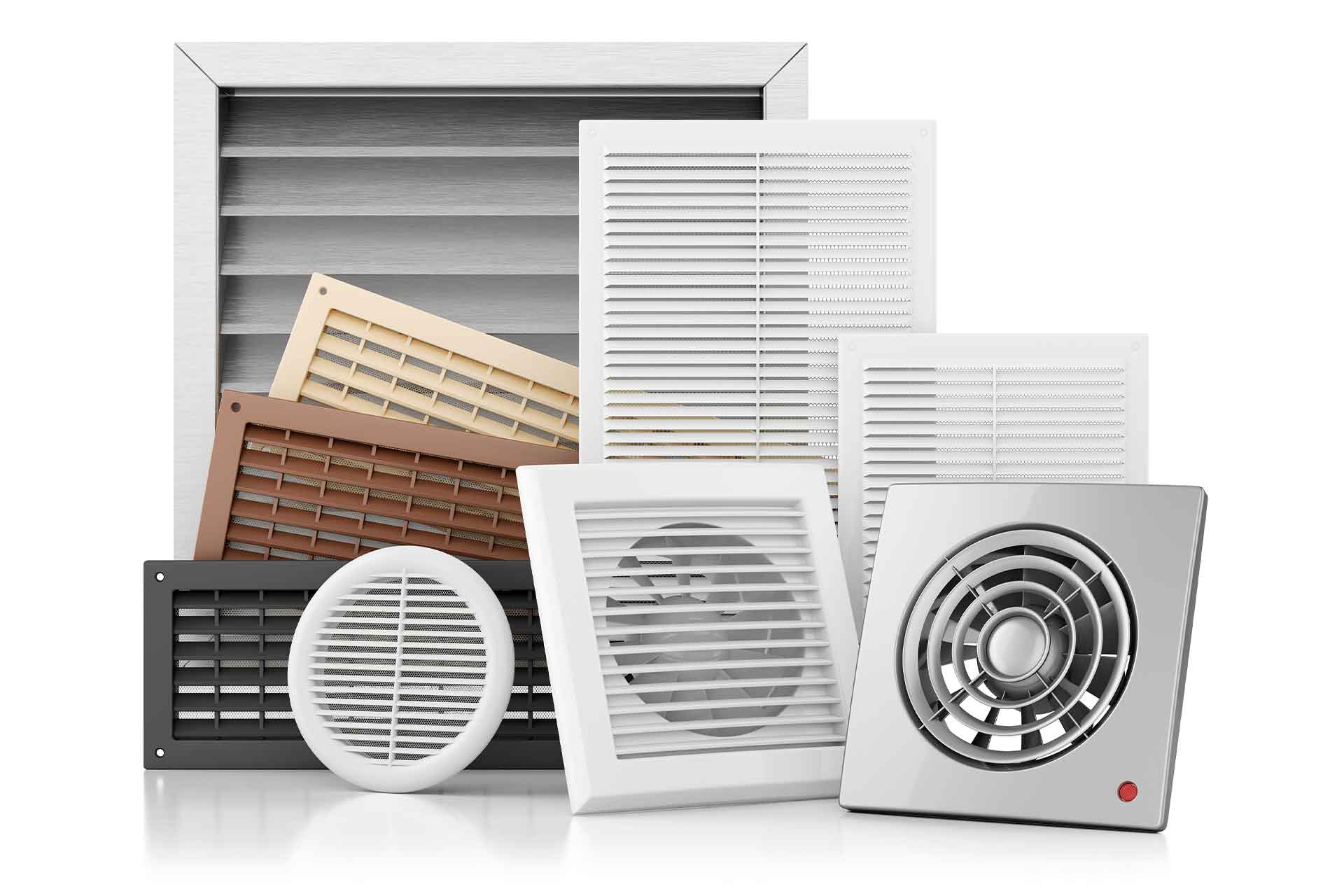The Science Behind Healthy Homes and Home Ventilation Melbourne
Comprehending the Significance of Home Air Flow for a Healthier Living Setting
Home ventilation plays a vital role in preserving a healthy living environment. It facilitates the exchange of exterior and indoor air, which is vital for boosting air high quality. Without appropriate air flow, homes can end up being breeding grounds for allergens and contaminants. The consequences of poor air circulation can be substantial. This brings up the query of just how home owners can efficiently execute air flow strategies to protect their wellness and health. Comprehending these approaches is imperative.

The Essentials of Home Ventilation
Home ventilation acts as a necessary element of indoor air high quality and comfort. It includes the process of exchanging stale interior air with fresh outside air, thereby decreasing moisture and regulating temperature level. Correct ventilation systems can include all-natural techniques, such as open home windows and vents, along with mechanical systems, such as exhaust fans and air exchangers. Reliable home air flow assists prevent concerns like indoor mold and mildew development and the buildup of hazardous particles. It additionally enhances general energy performance, as well-ventilated rooms can keep comfortable temperatures with much less reliance on home heating and cooling down systems. Recognizing the basics of home ventilation is important for property owners looking for to create a healthier living setting on their own and their families.

Usual Sources of Indoor Air Contamination

Although many may not understand it, indoor air pollution can originate from different resources within a household. Typical contributors include unpredictable natural substances (VOCs) emitted from paints, solvents, and cleaning products. Home devices, such as gas stoves and fireplaces, can launch harmful gases like carbon monoxide gas and nitrogen dioxide. Additionally, mold and mildew and mold thrive in moist locations, releasing spores that influence air top quality. Family pet dander, allergen, and plant pollen can collect indoors, more intensifying pollution degrees. Smoking cigarettes indoors generates harmful chemicals that linger in the air. Lastly, building products, including asbestos and formaldehyde, can off-gas unsafe materials. Recognizing these resources is necessary for keeping a healthier interior atmosphere and promoting reliable ventilation approaches.
Health Consequences of Poor Ventilation
Interior air contamination can have considerable health and wellness implications, specifically when ventilation is inadequate. Poor ventilation can bring about the accumulation of unsafe toxins, such as unpredictable organic compounds, mold and mildew, and particulate issue. This buildup might lead to respiratory system issues, consisting of asthma, allergic reactions, and chronic obstructive lung disease. People may experience symptoms like headaches, exhaustion, and irritability of the eyes, nose, and throat. Prone populaces, such as kids and the elderly, are at higher risk for extreme wellness impacts. Lasting direct exposure to badly ventilated settings can likewise contribute to extra severe problems, consisting of heart diseases. Making certain correct air flow is necessary for maintaining a healthy living environment and lowering the risk of wellness problems associated with indoor air pollution.
Efficient Ventilation Strategies for Your Home
Correct air flow is important for maintaining a healthy interior atmosphere, and carrying out reliable techniques can substantially boost air top quality. Home owners can begin by making sure that exhaust fans are set up in bathroom and kitchens to remove excess dampness and odors. Opening windows consistently permits fresh air to circulate, particularly throughout light climate. In addition, using air purifiers with HEPA filters can help record air-borne contaminants. For homes with heating and cooling down systems, preserving a/c systems and transforming filters frequently is essential for peak performance. Including natural ventilation techniques, such as cross-ventilation, can also improve airflow. Sealing any kind of leaks in doors and windows avoids undesirable drafts, which can disrupt regulated air flow, eventually leading to boosted interior air quality and convenience.
Preserving Ideal Air Quality Year-Round
To keep perfect air high quality year-round, home owners should embrace a positive approach to managing their interior atmosphere. Frequently keeping an eye on interior air high quality is vital; this includes monitoring for pollutants such as dust, mold, and unpredictable natural compounds (VOCs) Executing effective ventilation systems, such as exhaust followers and air purifiers, can substantially minimize air-borne pollutants. Furthermore, regular upkeep of a/c systems assurances peak performance and air blood circulation. House owners must also take into consideration humidity degrees, as too much moisture can bring about mold and mildew growth. Seasonal changes may necessitate modifications in ventilation approaches to fit varying outdoor air high quality. By focusing on these techniques, house owners can create a healthier living room, advertising total health for all owners throughout the year.
Regularly Asked Concerns
Just How Can I Inform if My Home Demands Much Better Ventilation?
To determine if a home needs much better air flow, one ought to observe indications such as consistent humidity, mold and mildew growth, stuffy smells, internet condensation on home windows, or increased allergy signs and symptoms, suggesting inadequate airflow and possibly inadequate interior air quality.
What Are the Indications of Poor Indoor Air High Quality?

Can Houseplants Improve Indoor Air Quality Effectively?
The effectiveness of houseplants in enhancing interior air quality is questioned. While some studies suggest they can soak up toxins and produce oxygen, their overall impact may be very little compared to correct air flow and air purification systems.
How Typically Should I Modification My Air Filters?
The regularity of air filter modifications typically depends upon usage and filter type. Generally, it is suggested to replace filters every 3 months, though houses with allergic reactions or family pets might need even more regular changes for ideal performance.
Are There Any Certain Ventilation Solutions for Allergic Reaction Sufferers?
Lots of air flow systems, such as HEPA-filtered systems, efficiently lower allergens airborne. Home Ventilation Melbourne. These systems catch pet dog, dirt, and plant pollen dander, providing allergic reaction sufferers with a cleaner, healthier interior setting while taking care of air top quality successfully
It assists in the exchange of interior and exterior air, which is important for boosting air high quality. Home air flow serves as a necessary component of indoor air quality and comfort. It involves the procedure of trading stale indoor air with fresh outdoor air, thus reducing humidity and regulating temperature. Indoor air contamination can have considerable health and wellness effects, especially when ventilation is insufficient. Appropriate air flow is essential for keeping a healthy and balanced indoor atmosphere, and executing efficient strategies can greatly check it out boost air quality.